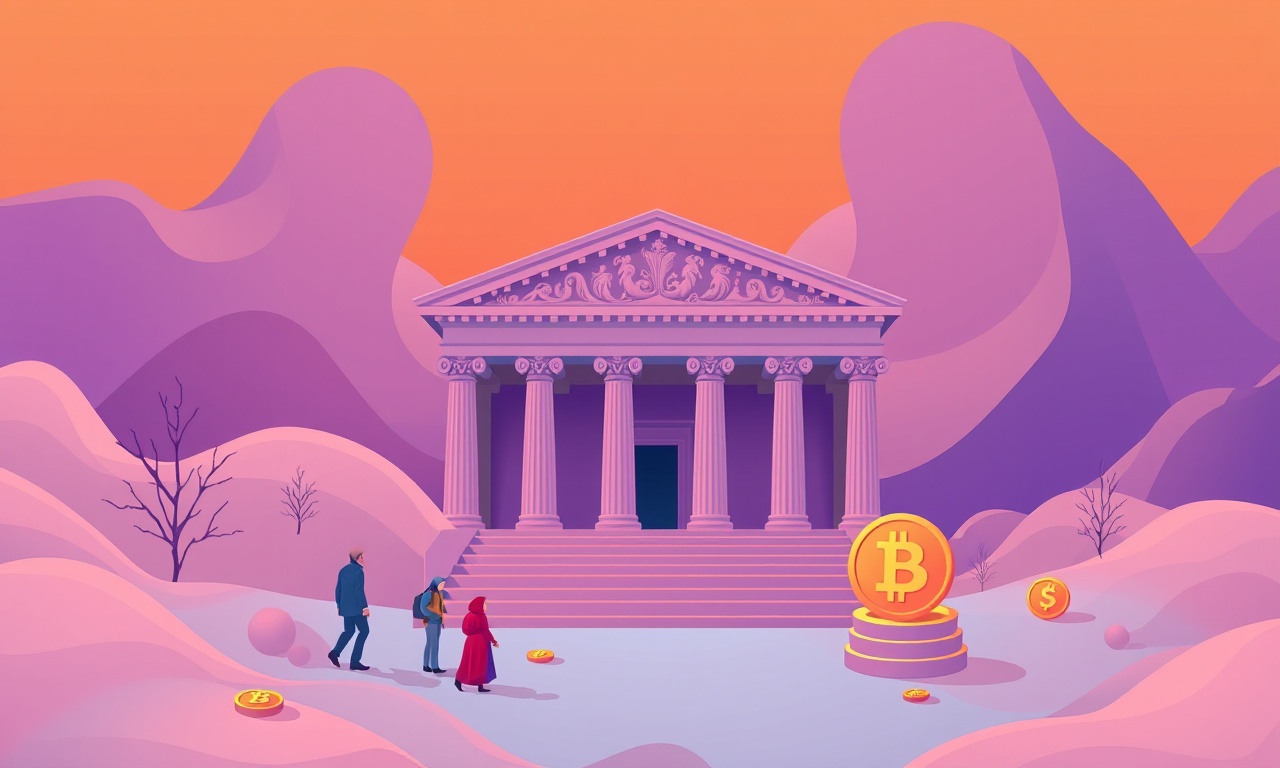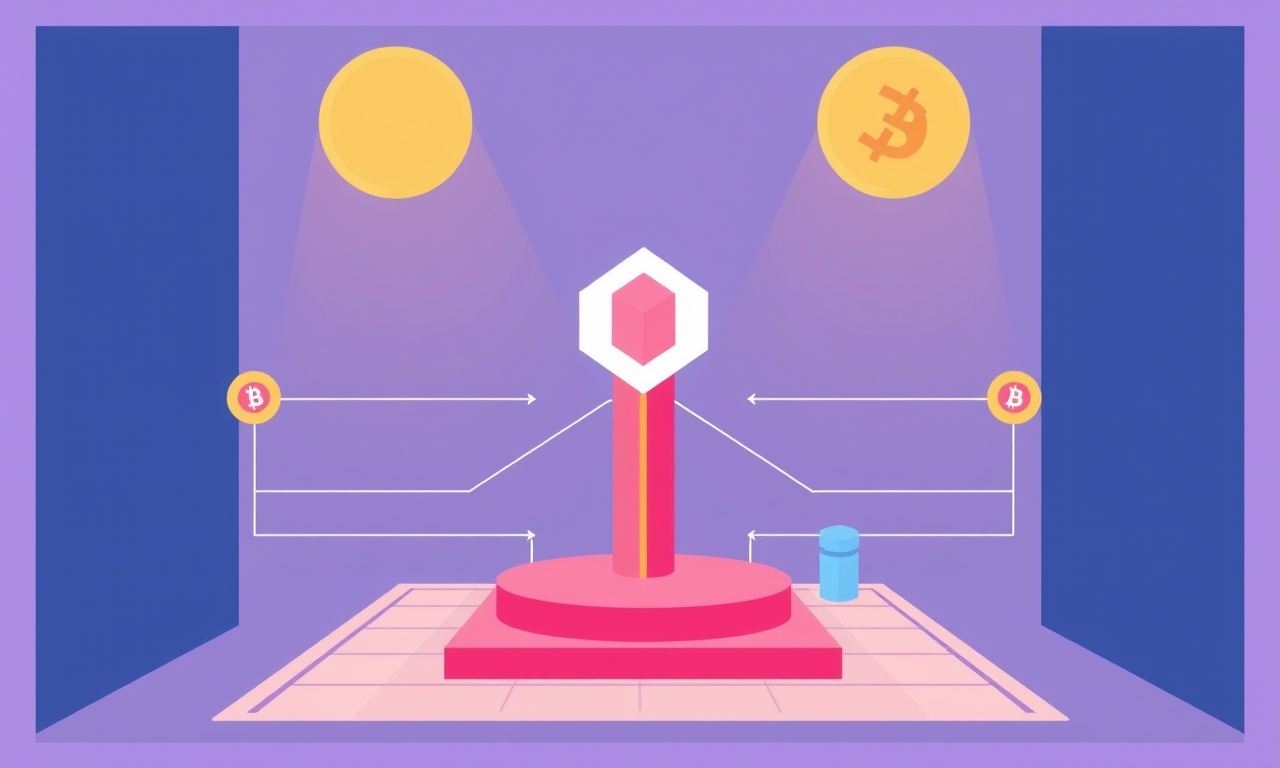Foundations Of DeFi Understanding Collateralized Debt Positions And Emergency Shutdowns

Collateralized Debt Positions (CDPs) form one of the core mechanisms that make decentralized finance (DeFi) functional. They allow participants to lock a cryptocurrency as collateral and draw a stable‑value debt against it, creating a self‑sustaining liquidity layer that does not rely on traditional banks. At the same time, CDPs introduce the risk of under‑collateralization. The DeFi ecosystem has therefore evolved a range of safety mechanisms, the most dramatic of which is the Emergency Shutdown Protocol. This article walks through how CDPs work, why and how they can be shut down, and what that means for users and developers.
The Anatomy of a Collateralized Debt Position
Definition and Core Purpose
A Collateralized Debt Position is a smart‑contract‑based account that holds a user‑specified collateral asset and issues a debt token that represents a stable‑value claim. The user’s collateral must always exceed the value of the debt by a predetermined margin, called the collateralization ratio. If the ratio falls below the minimum, the position becomes liquidatable and the collateral is seized to cover the debt. This design ensures that the overall system remains solvent without requiring centralized custodians.
Key Parameters
- Collateral Asset – Any ERC‑20 token that the protocol accepts (ETH, DAI, USDC, etc.).
- Debt Token – Often a stablecoin or an interest‑bearing token that tracks the amount borrowed.
- Collateralization Ratio – The minimum percentage of collateral value relative to debt (e.g., 150 %).
- Stability Fee – An interest rate that accrues to the debt over time, expressed as an annual percentage rate.
- Liquidation Penalty – A fee paid to liquidators when a position is sold short.
- Debt Ceiling – A protocol‑wide limit that caps the total amount of debt that can be issued.
How a CDP Works – Step‑by‑Step
-
Opening the Position
The user calls theopenfunction on the CDP contract, supplying a specified amount of collateral. The contract records the collateral balance and issues the user a new CDP identifier. -
Drawing Debt
Using thedrawfunction, the user borrows up to the allowed maximum, calculated as
maxDebt = (collateralValue × collateralizationRatio) – currentDebt.
The protocol mints the debt token to the user’s address. -
Paying Back Debt
The user can repurchase the debt token at any time. Each repayment reduces the debt balance and, if sufficient, can allow the user to withdraw part or all of the collateral. -
Monitoring Collateralization
Every transaction that changes collateral or debt triggers a check. If the collateral value falls below the minimum ratio, the CDP becomes liquidatable. -
Liquidation
An external actor (often a “liquidator”) calls theliquidatefunction. The contract burns the debt token, sells the collateral at the market price, pays the debt plus penalty, and returns any excess to the liquidator. The user’s position is closed. -
Closing the Position
Once the debt is fully repaid, the user can withdraw all remaining collateral by callingwithdraw.
Risk Factors and Mitigation
| Risk | Mitigation |
|---|---|
| Price Volatility | High collateralization ratio, frequent oracle updates |
| Oracle Manipulation | Multiple oracles, median or time‑weighted averages |
| Smart‑Contract Bugs | Formal verification, audits, bug bounty programs |
| Governance Attacks | Decentralized voting, multisig safeguards |
A Closer Look: MakerDAO’s CDP System
MakerDAO, arguably the most famous CDP protocol, introduced the Vault system to separate collateral management from debt issuance. Here’s a quick run‑through of its mechanics:
- Vaults hold the collateral; they are identified by a unique Vault ID.
- Collateral Types (e.g., ETH‑DAI, BAT‑DAI) each have their own stability fee and liquidation ratio.
- DAI is the stable debt token, pegged to the US dollar.
- Governance is carried out by MKR token holders who decide on parameters such as stability fees, risk weights, and the overall debt ceiling.
MakerDAO’s governance model illustrates how a community can dynamically adjust system parameters to respond to market conditions, reducing the probability of a system‑wide failure.
When Things Go Wrong: The Need for Emergency Shutdowns
Why an Emergency Shutdown Is Necessary
Even the most carefully designed CDP system can face a catastrophic failure if a single point of weakness is exploited or if market conditions move too fast for the protocol’s controls to respond. In such scenarios, the protocol must act swiftly to preserve the value of all outstanding collateral and to prevent systemic loss. An Emergency Shutdown (ESD) is a predefined, automated safety valve that:
- Halts all new CDP activity.
- Freezes existing debt balances.
- Initiates a controlled liquidation or liquidation‑free settlement.
Typical Triggers
- Oracle Failure – Sudden oracle downtime or data manipulation.
- Mass Liquidations – A cascading liquidation event that depletes the protocol’s collateral reserves.
- Code Vulnerability Exploit – A discovered bug that could be exploited to drain funds.
- Governance Delays – Inability to pass a critical parameter change in a timely manner.
How an Emergency Shutdown Works
- Detection – A monitoring system or a community member submits a “shutdown signal.”
- Proposal – A formal emergency shutdown proposal is created and recorded on the governance ledger.
- Voting – Token holders vote on the proposal within a specified window.
- Execution – Once a quorum is met, the protocol executes the shutdown:
- All new CDP openings are disabled.
- Existing CDP contracts enter “shutdown mode.”
- Collateral is either frozen or locked in a treasury contract.
- Settlement – Users can claim refunds or receive a new asset that represents their collateral’s value, often denominated in a risk‑adjusted token or a new stablecoin issued by the protocol.
This sequence is designed to be transparent and auditable, giving users confidence that the protocol’s safeguards are trustworthy.
Case Study: MakerDAO’s Emergency Shutdown
On March 2020, MakerDAO faced an unprecedented event when the value of ETH dropped sharply, triggering a wave of liquidations. To protect the system, the MakerDAO community invoked an emergency shutdown. The shutdown did the following:
- Locked all outstanding Vaults, preventing further debt draws.
- Initiated a “settlement” where users could reclaim their collateral in a new, risk‑adjusted token called DAI‑S.
- Allowed a temporary suspension of the stability fee to avoid compounding losses.
The process took 48 hours from detection to execution and restored confidence in the system. Subsequent protocol upgrades included additional oracle redundancy and more granular liquidation thresholds.
User Experience During an Emergency Shutdown
What Users Should Expect
| Action | Expected Outcome |
|---|---|
| Drawing Debt | Disallowed after shutdown is active. |
| Repaying Debt | Accepted, but may be redirected to a new settlement token. |
| Withdrawing Collateral | Allowed only via the emergency settlement mechanism. |
| Participating in Governance | Voting rights may be paused until the shutdown resolves. |
Steps to Secure Your Position
- Monitor Your Vault – Keep an eye on your collateralization ratio and the health factor.
- Set Alerts – Use DeFi analytics dashboards to receive real‑time notifications.
- Understand the Protocol’s Emergency Procedures – Read the whitepaper and community documentation.
- Diversify Collateral – Avoid over‑concentration in a single asset that might become volatile.
Building Safer CDP Systems
Oracle Design
- Multi‑Source Aggregation – Combine prices from several reputable oracles.
- Time‑Weighted Averages – Reduce the impact of sudden spikes.
- Incentive Alignment – Use oracle rebates to encourage honest reporting.
Risk Modeling
- Dynamic Collateral Weights – Adjust risk weights based on market volatility.
- Predictive Liquidation – Use machine learning to anticipate when a position will become under‑collateralized.
- Stress Testing – Run Monte Carlo simulations for extreme market scenarios.
Governance Enhancements
- Granular Voting – Allow token holders to vote on individual parameter changes rather than a single proposal.
- Time‑Lock Mechanisms – Delay the effect of parameter changes to give users time to adjust.
- Community Audits – Encourage third‑party oversight to detect vulnerabilities before they are exploited.
The Future of Collateralized Debt Positions
- Cross‑Chain CDPs – Leveraging Polkadot or Cosmos to pool collateral from multiple chains.
- Layer‑2 Scaling – Deploy CDPs on rollups to reduce gas costs and increase throughput.
- Integration with DeFi Insurance – Offer on‑chain coverage for liquidation events.
- Composable Debt Instruments – Allow CDPs to be used as collateral for other DeFi protocols, creating a more interconnected ecosystem.
Final Thoughts
Collateralized Debt Positions are a foundational tool that gives DeFi its flexibility and resilience. By allowing users to generate stable‑value debt against volatile collateral, CDPs unlock new financial flows without centralized intermediaries. However, their reliance on smart contracts, price oracles, and governance introduces unique risk vectors. Emergency Shutdown Protocols serve as an essential safeguard, ensuring that a protocol can gracefully retreat in the face of a crisis. Understanding both CDPs and their emergency mechanisms equips participants to navigate the DeFi landscape more confidently and to contribute to building systems that are both innovative and secure.

.png)
Emma Varela
Emma is a financial engineer and blockchain researcher specializing in decentralized market models. With years of experience in DeFi protocol design, she writes about token economics, governance systems, and the evolving dynamics of on-chain liquidity.
Random Posts

A Deep Dive Into DeFi Protocol Terminology And Architecture
DeFi turns banks into code-based referees, letting smart contracts trade without intermediaries. Layer after layer of protocols creates a resilient, storm ready financial web.
8 months ago

Mastering DeFi Option Pricing with Monte Carlo Simulations
Unlock accurate DeFi option pricing with Monte Carlo simulations, learn how to model volatile tokens, liquidity rewards, and blockchain quirks.
6 months ago

From Mechanisms to Models in DeFi Governance and Prediction Markets
Explore how DeFi moves from simple voting to advanced models that shape governance and prediction markets, revealing the rules that drive collective decisions and future forecasts.
5 months ago

DeFi Foundations Yield Engineering and Fee Distribution Models
Discover how yield engineering blends economics, smart-contract design, and market data to reward DeFi participants with fair, manipulation-resistant incentives. Learn the fundamentals of pools, staking, lending, and fee models.
1 month ago

Beyond Borders Uncovering MEV Risks in Multi Chain Smart Contracts
Discover how cross-chain MEV turns multi-chain smart contracts into a playground for arbitrage, exposing new attack surfaces. Learn real incidents and practical mitigation tips.
5 months ago
Latest Posts

Foundations Of DeFi Core Primitives And Governance Models
Smart contracts are DeFi’s nervous system: deterministic, immutable, transparent. Governance models let protocols evolve autonomously without central authority.
2 days ago

Deep Dive Into L2 Scaling For DeFi And The Cost Of ZK Rollup Proof Generation
Learn how Layer-2, especially ZK rollups, boosts DeFi with faster, cheaper transactions and uncovering the real cost of generating zk proofs.
2 days ago

Modeling Interest Rates in Decentralized Finance
Discover how DeFi protocols set dynamic interest rates using supply-demand curves, optimize yields, and shield against liquidations, essential insights for developers and liquidity providers.
3 days ago
